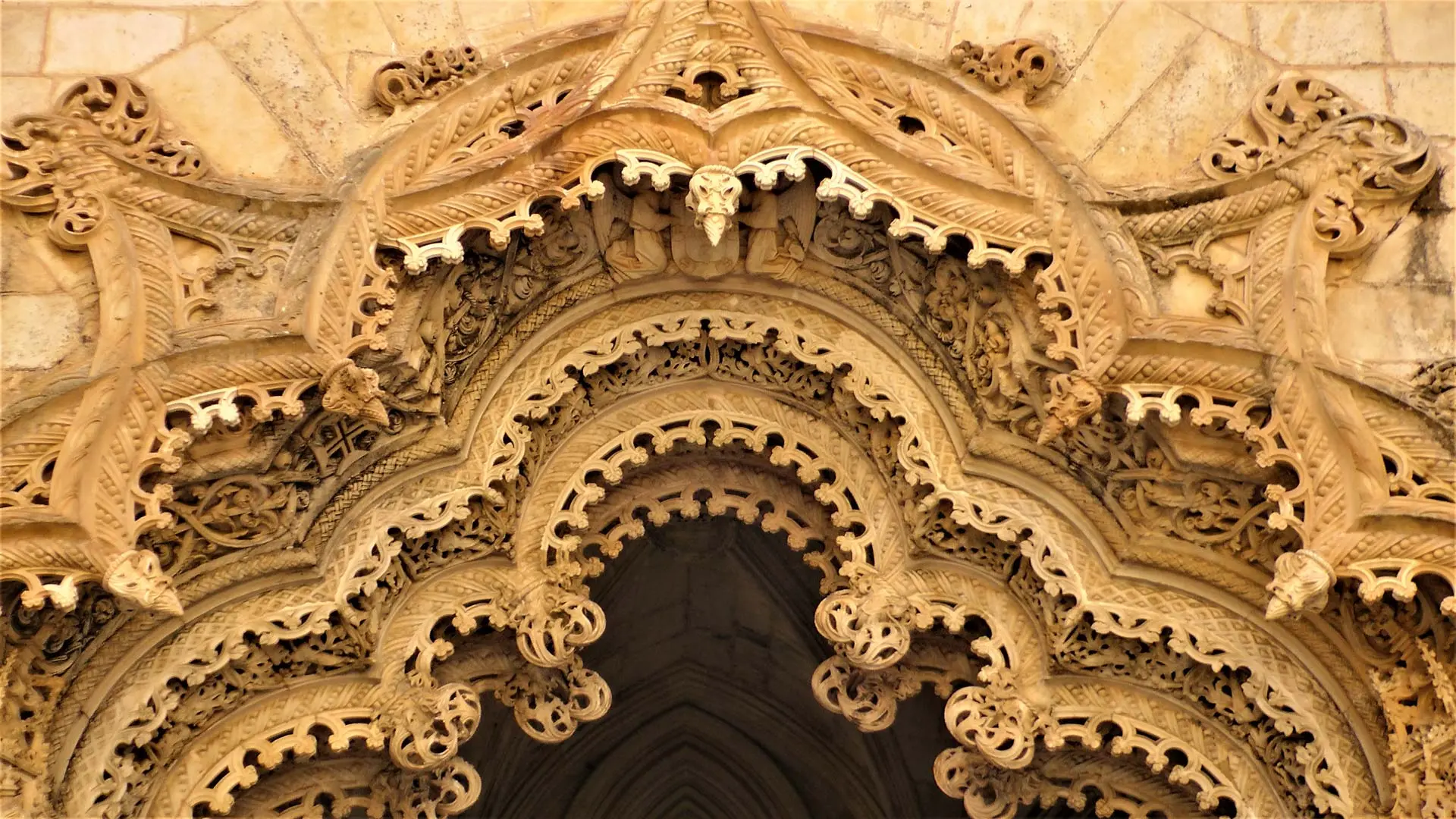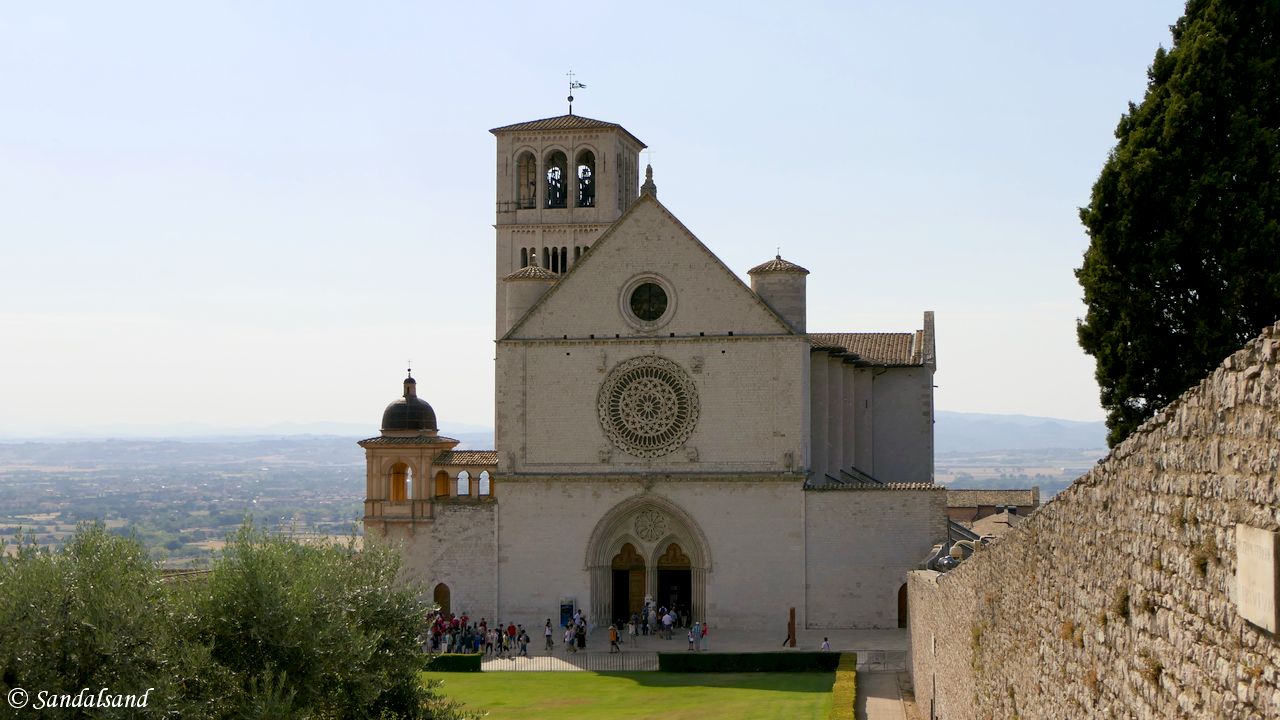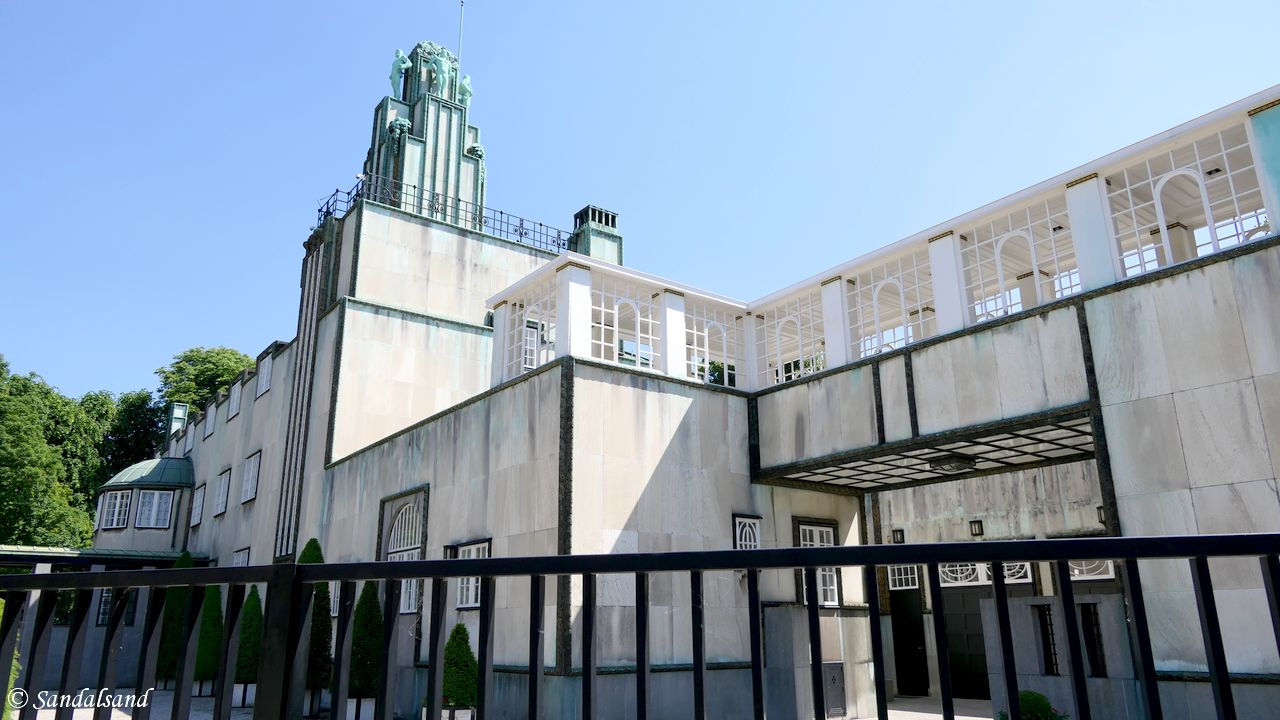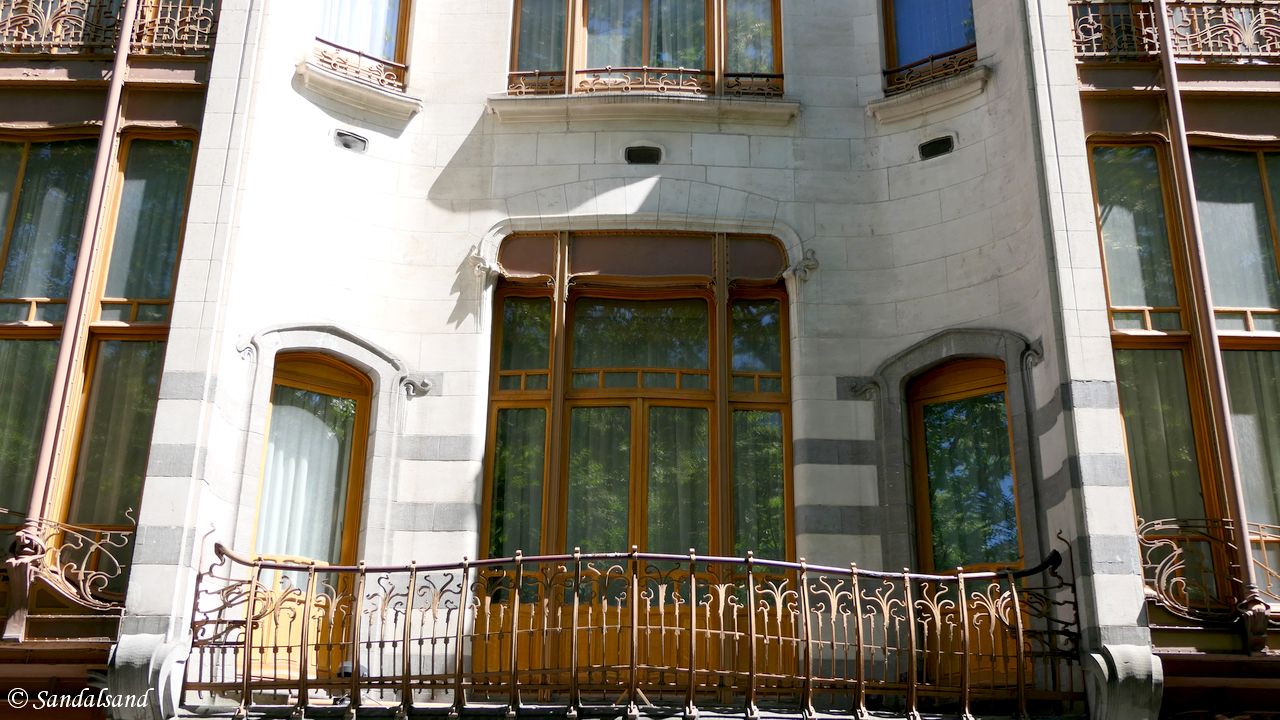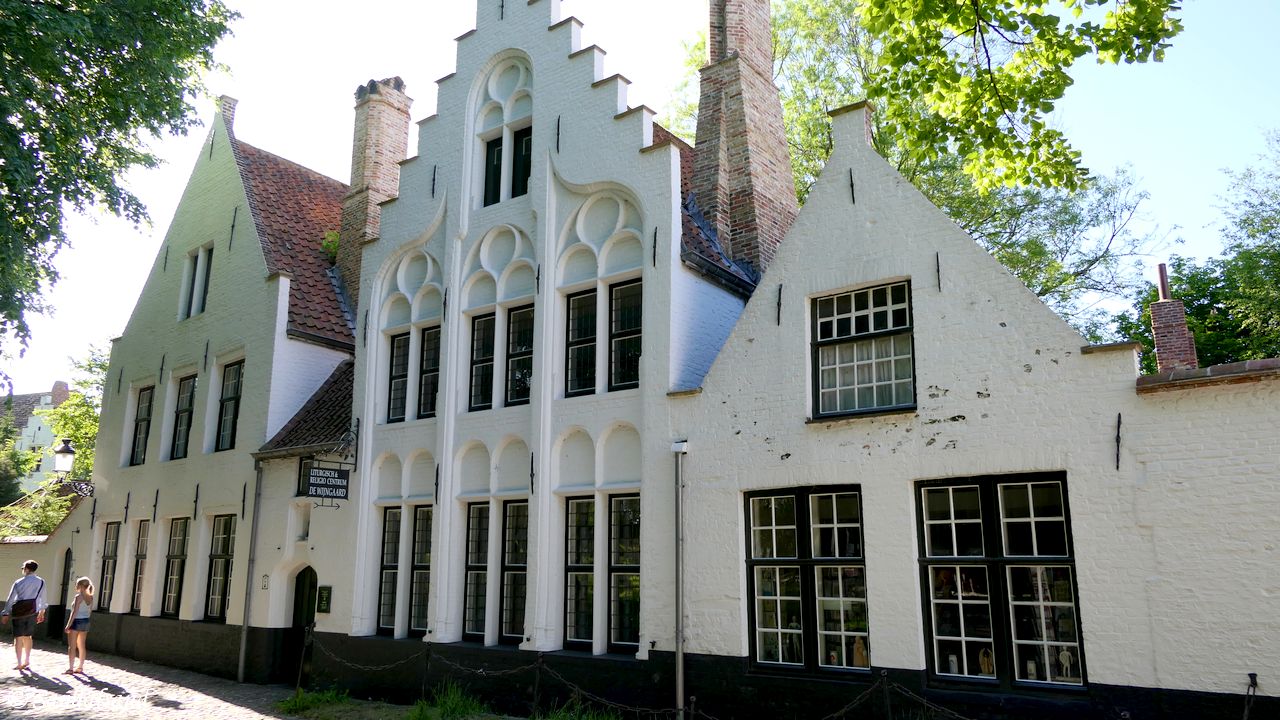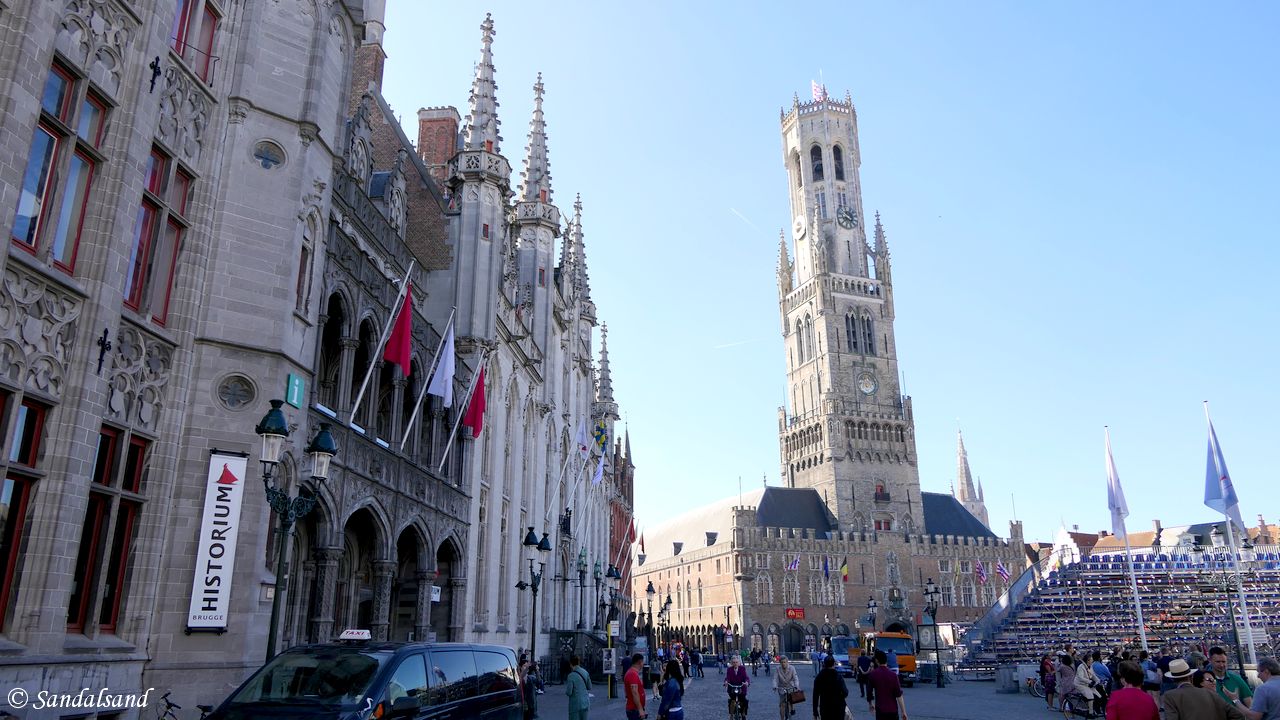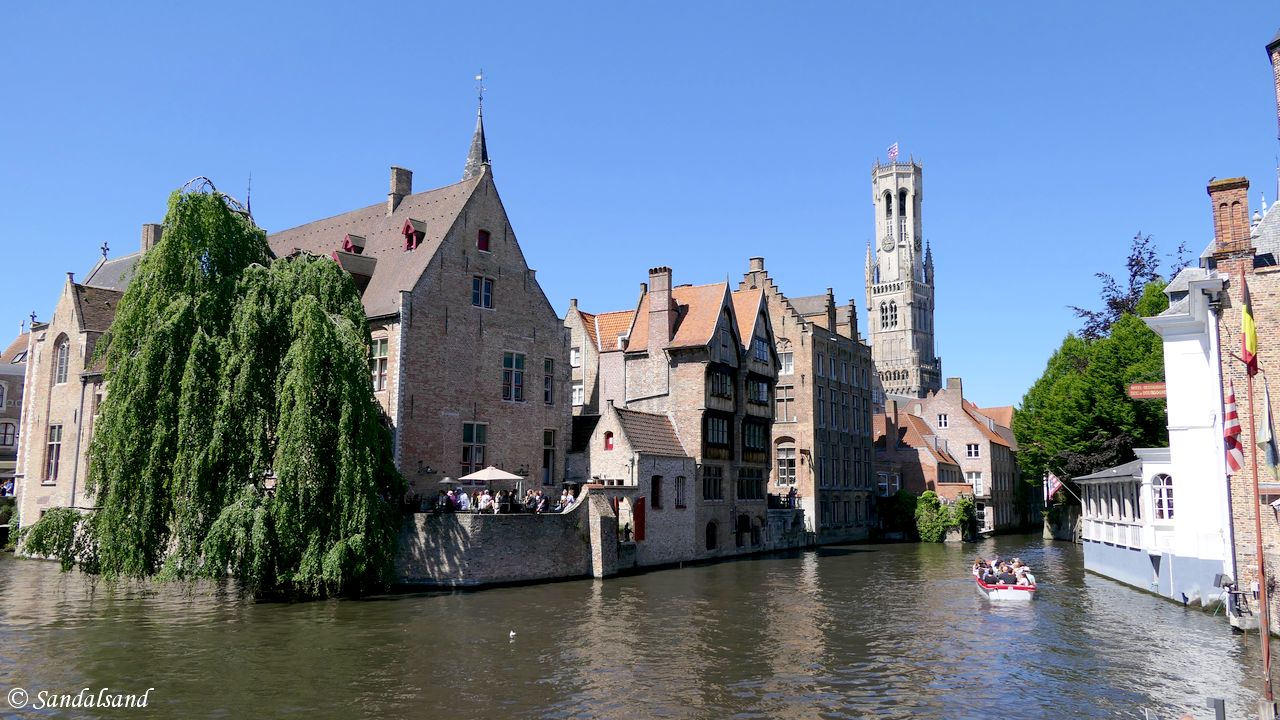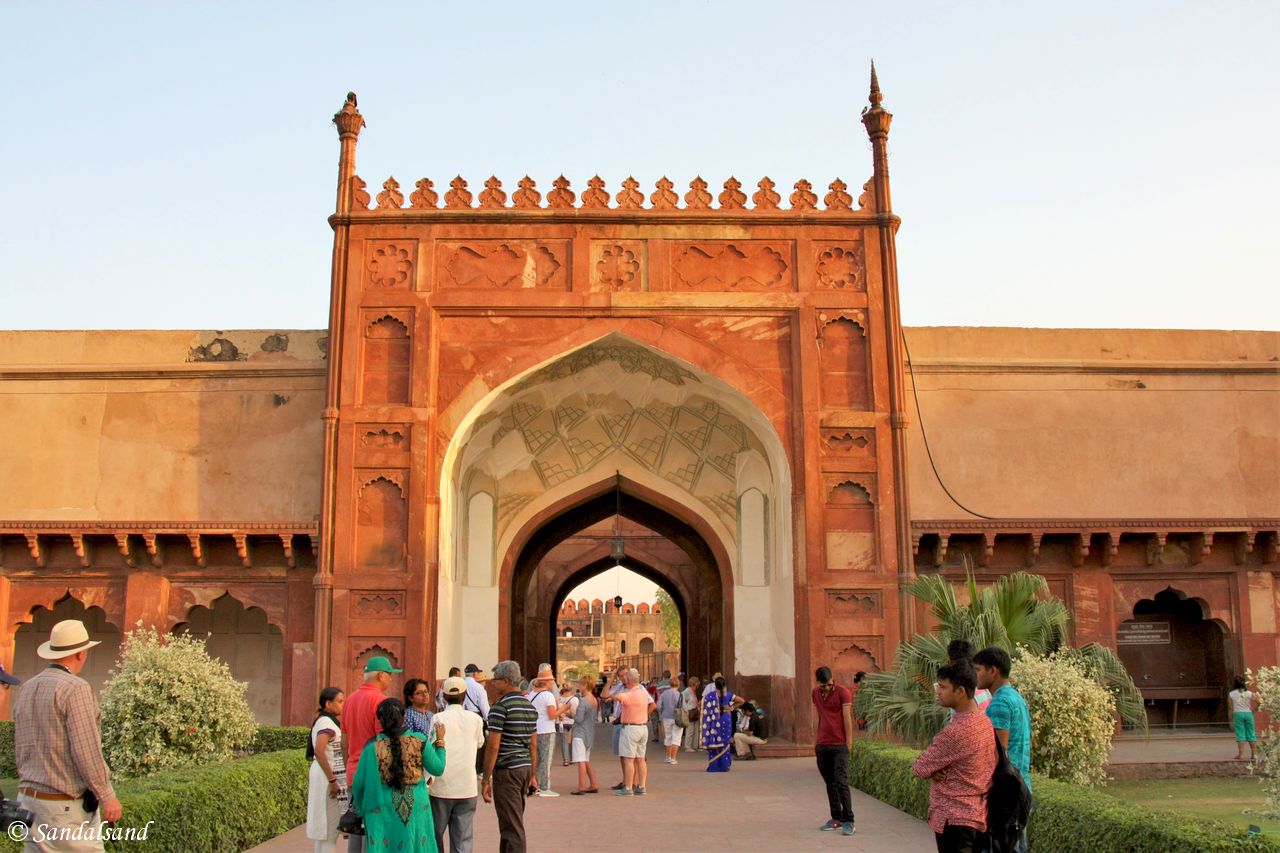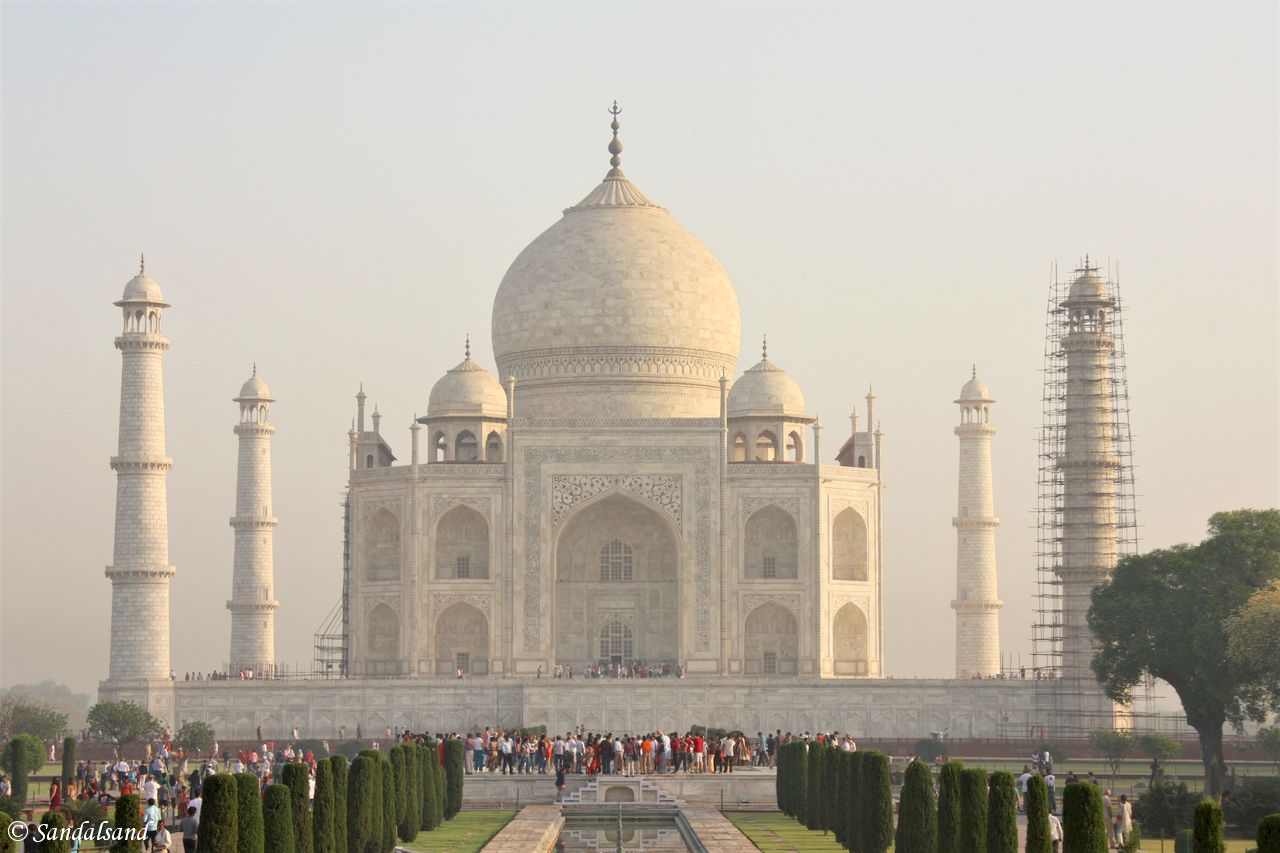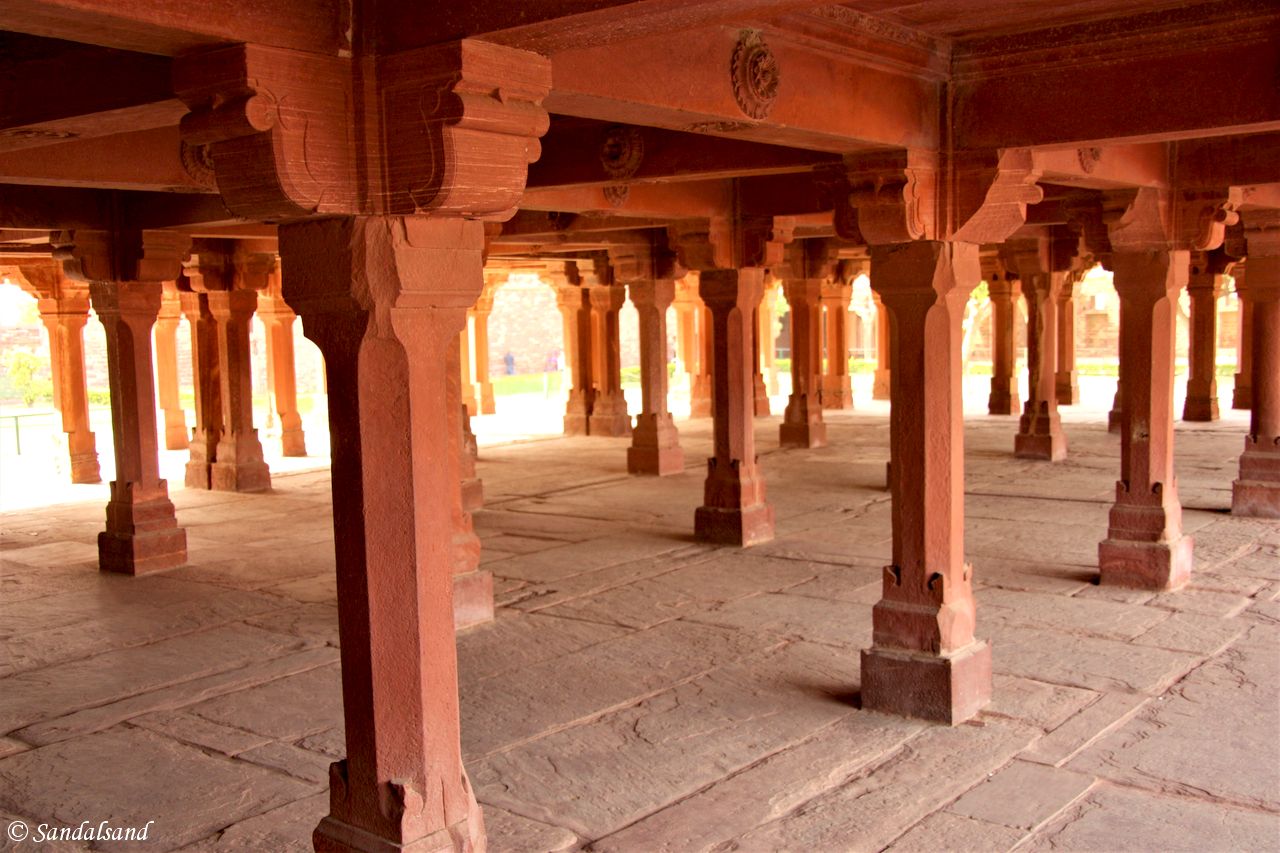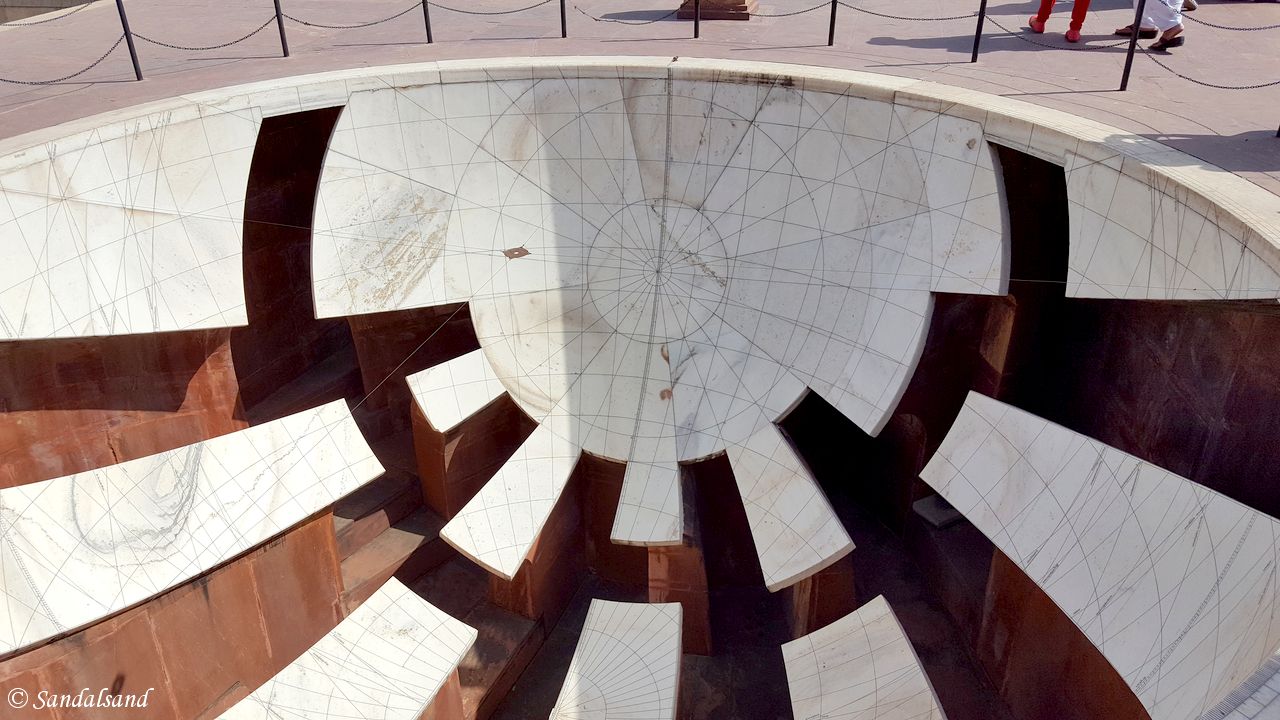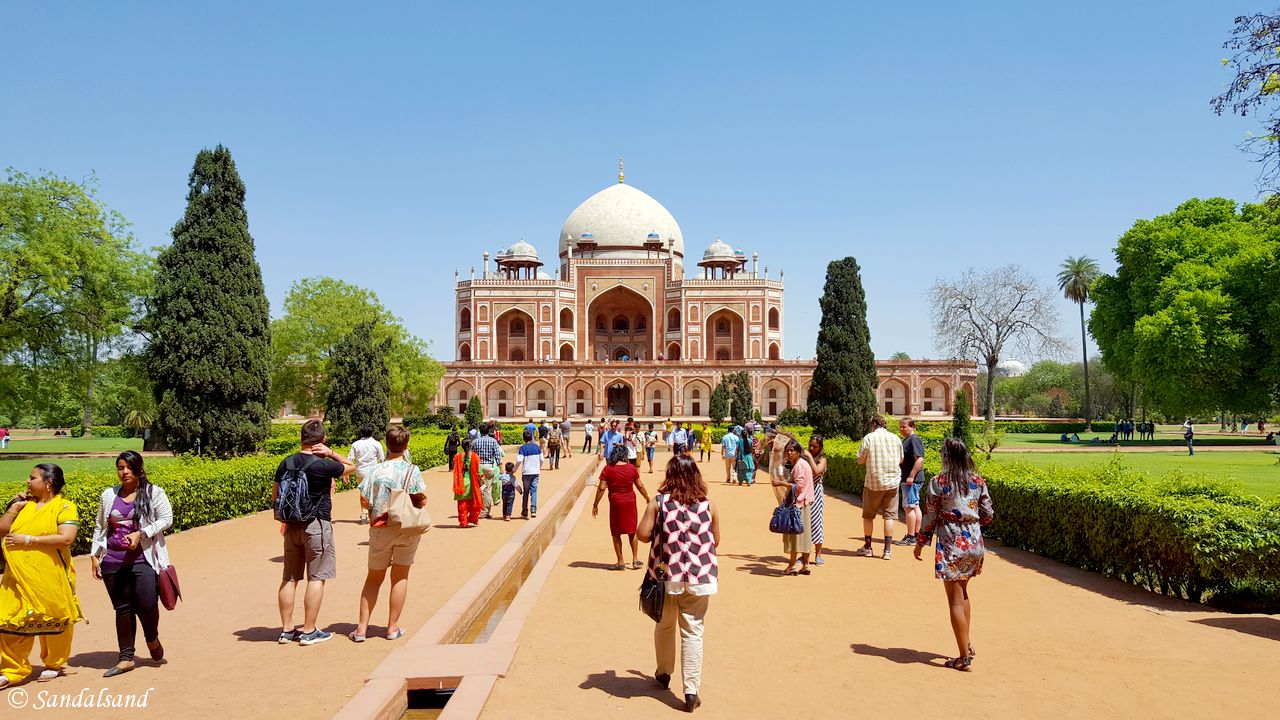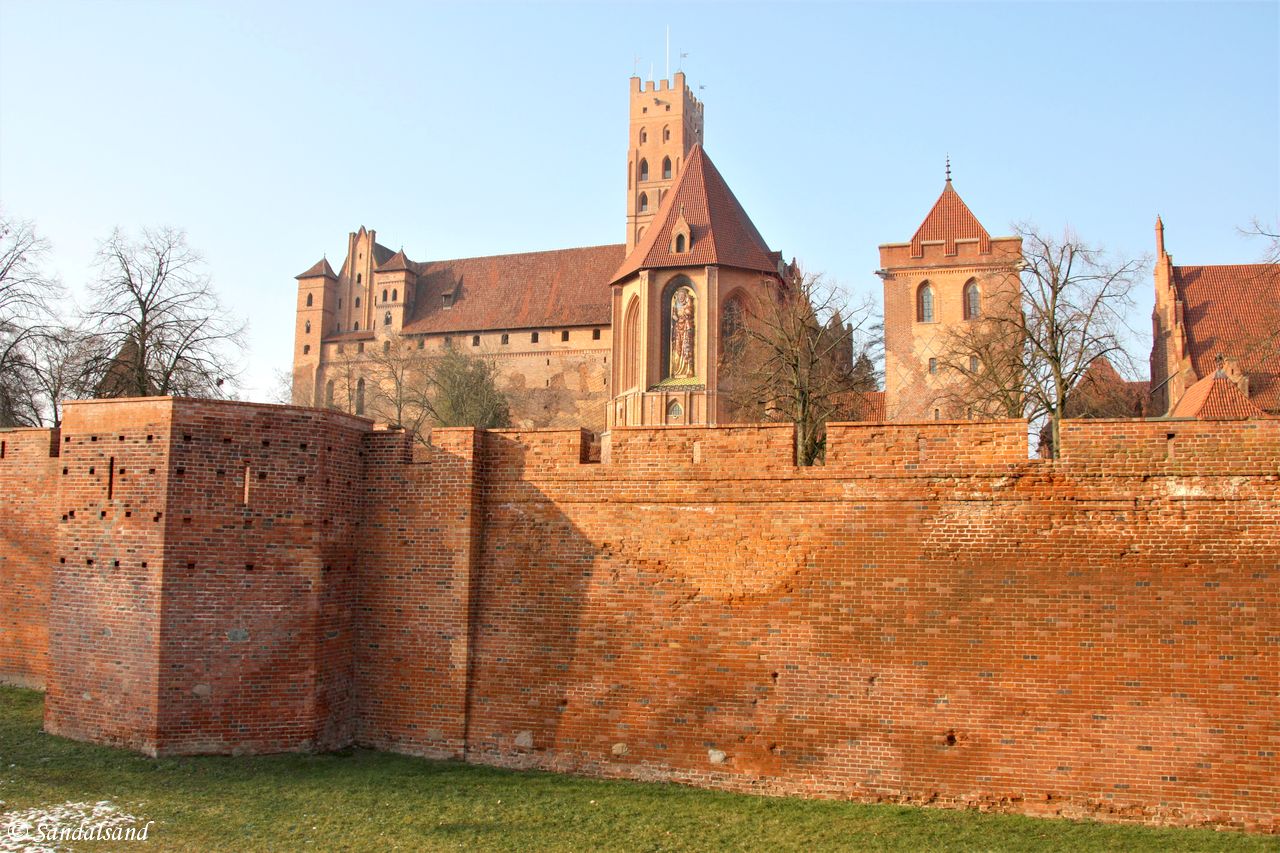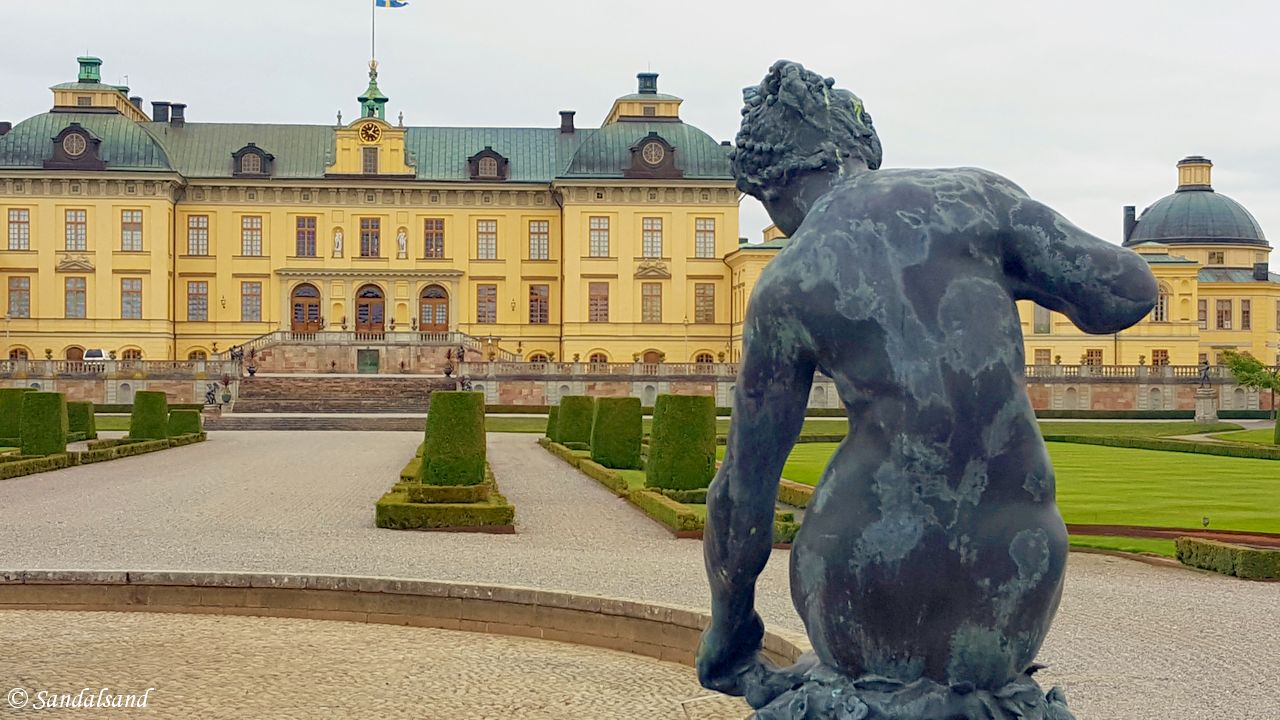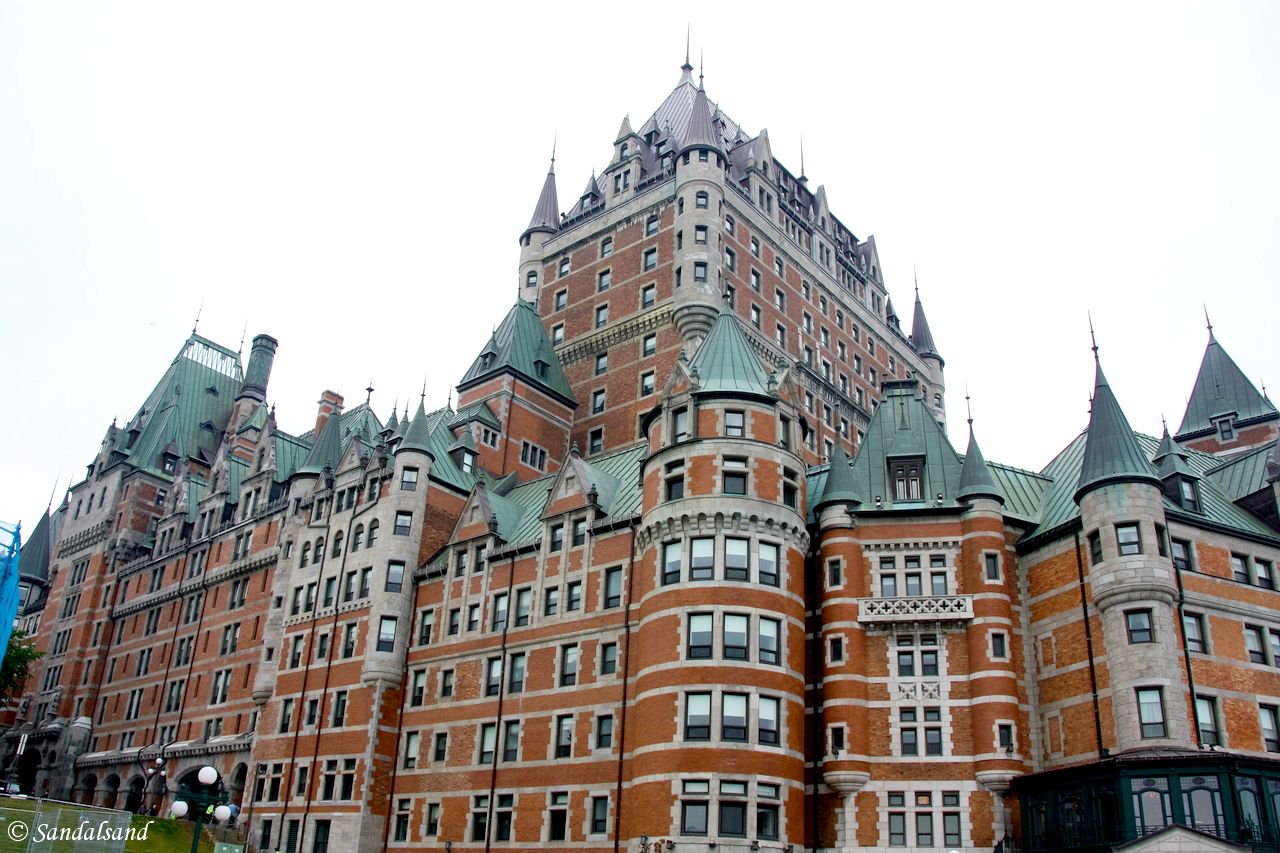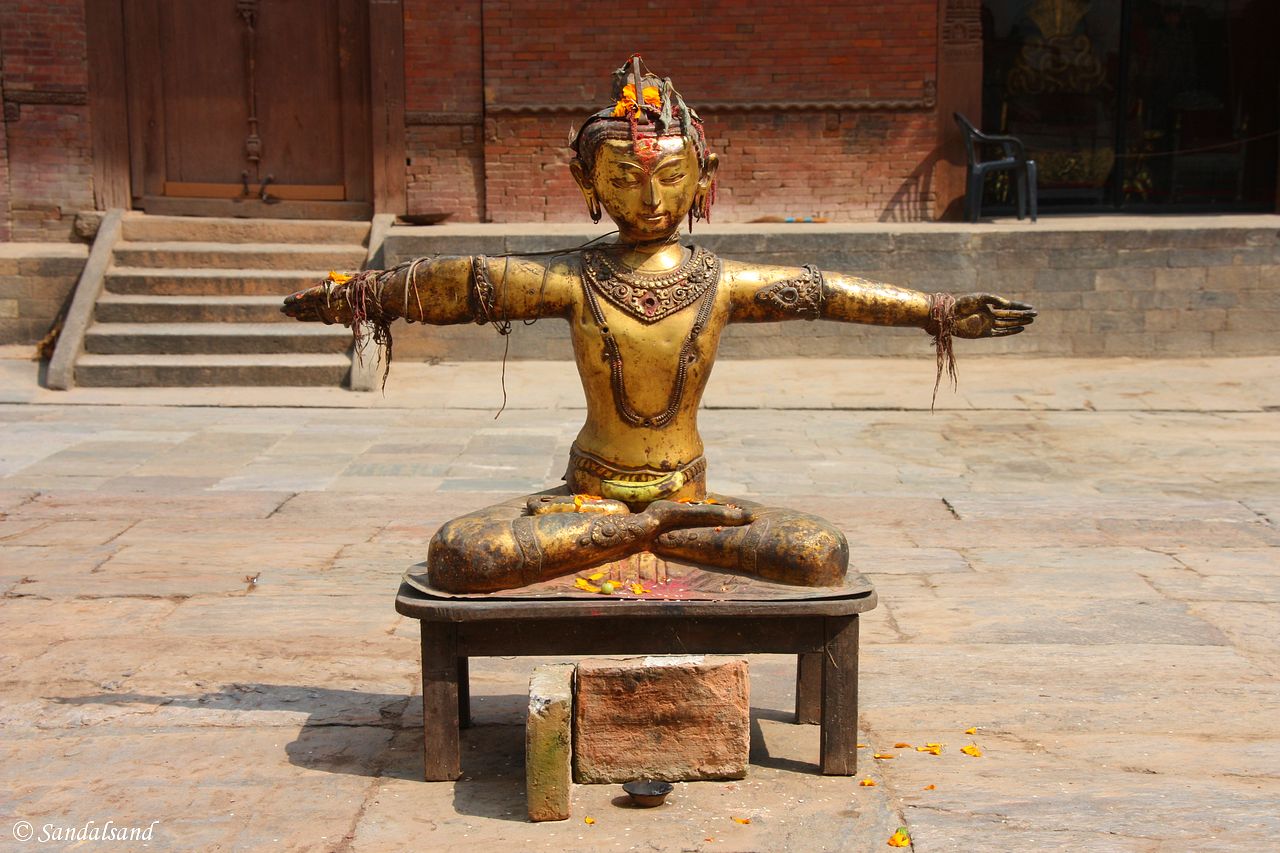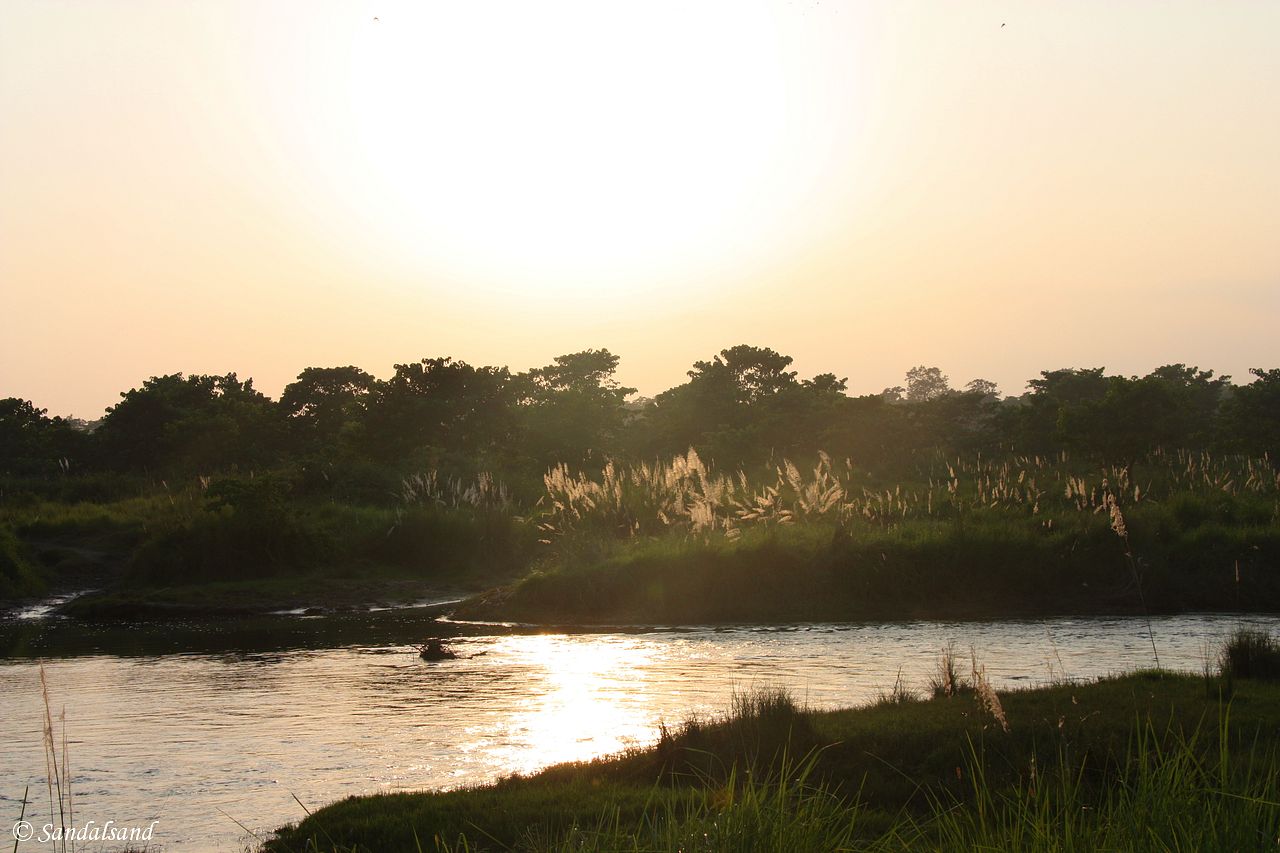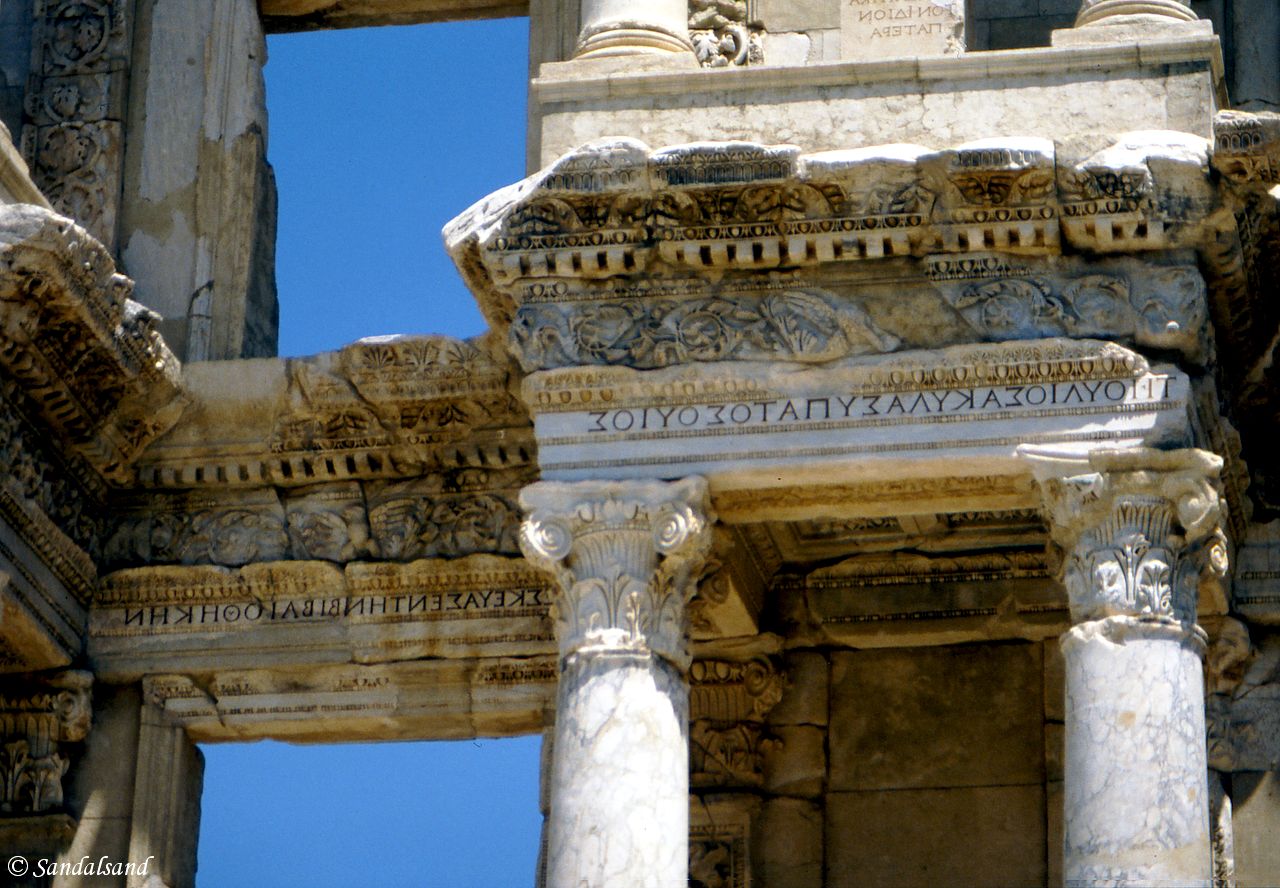World Heritage Sites
The UNESCO World Heritage List includes more than a thousand properties of outstanding universal value. They are all part of the world’s cultural and natural heritage.
UNESCO’s World Heritage Centre is responsible for the World Heritage List. The first inscription was in 1978. Since then UNESCO has developed the criteria and added an average of 20-30 sites each year.
It includes 1,223 sites in 168 “States Parties” (countries). A site is categorised as cultural heritage (952 sites), natural (231) or a mix of the two (40 sites).
On this page you will get to learn more about the heritage sites and where they are. Moreover, Sandalsand’s large collection comes on display. The reader will get a four-way path into this collection. First, on a map. Second, in a table. Third, in a video.
Fourth and last, but not least, there are links to articles on Sandalsand which describe each visited site.
The featured illustration with intricate carvings, is a detail from the Monastery of Batalha, Portugal.
About
Thoughts
Regions
Videos
Map
Table
Posts
About the World Heritage Sites
Properties on the World Heritage List must (a) be of outstanding universal value and (b) meet at least one of the ten selection criteria. UNESCO writes that until the end of 2004, World Heritage sites were selected on the basis of six cultural and four natural criteria. With the adoption of the revised Operational Guidelines for the Implementation of the World Heritage Convention, only one set of ten criteria exists. All ten criteria are listed below, however Sandalsand has added two headlines (culture and nature) because the set of criteria still relates to two sets.
Culture
(i) to represent a masterpiece of human creative genius;
(ii) to exhibit an important interchange of human values, over a span of time or within a cultural area of the world, on developments in architecture or technology, monumental arts, town-planning or landscape design;
(iii) to bear a unique or at least exceptional testimony to a cultural tradition or to a civilization which is living or which has disappeared;
(iv) to be an outstanding example of a type of building, architectural or technological ensemble or landscape which illustrates (a) significant stage(s) in human history;
(v) to be an outstanding example of a traditional human settlement, land-use, or sea-use which is representative of a culture (or cultures), or human interaction with the environment especially when it has become vulnerable under the impact of irreversible change;
(vi) to be directly or tangibly associated with events or living traditions, with ideas, or with beliefs, with artistic and literary works of outstanding universal significance. (The Committee considers that this criterion should preferably be used in conjunction with other criteria);
Nature
(vii) to contain superlative natural phenomena or areas of exceptional natural beauty and aesthetic importance;
(viii) to be outstanding examples representing major stages of earth’s history, including the record of life, significant on-going geological processes in the development of landforms, or significant geomorphic or physiographic features;
(ix) to be outstanding examples representing significant on-going ecological and biological processes in the evolution and development of terrestrial, fresh water, coastal and marine ecosystems and communities of plants and animals;
(x) to contain the most important and significant natural habitats for in-situ conservation of biological diversity, including those containing threatened species of outstanding universal value from the point of view of science or conservation.
Some thoughts
An inscription on the World Heritage List is generally regarded as an honorary tribute. It will also boost both commercial and preservation activities in or at the site.
Step one is to raise an awareness worldwide to the importance of preserving these sites for future generations. The next step is to do something about it, in other words to set up a conservation plan for the site. The final step is to live by it. These are very demanding tasks for all parties, and there are undoubtedly both economic and culture factors at play here.
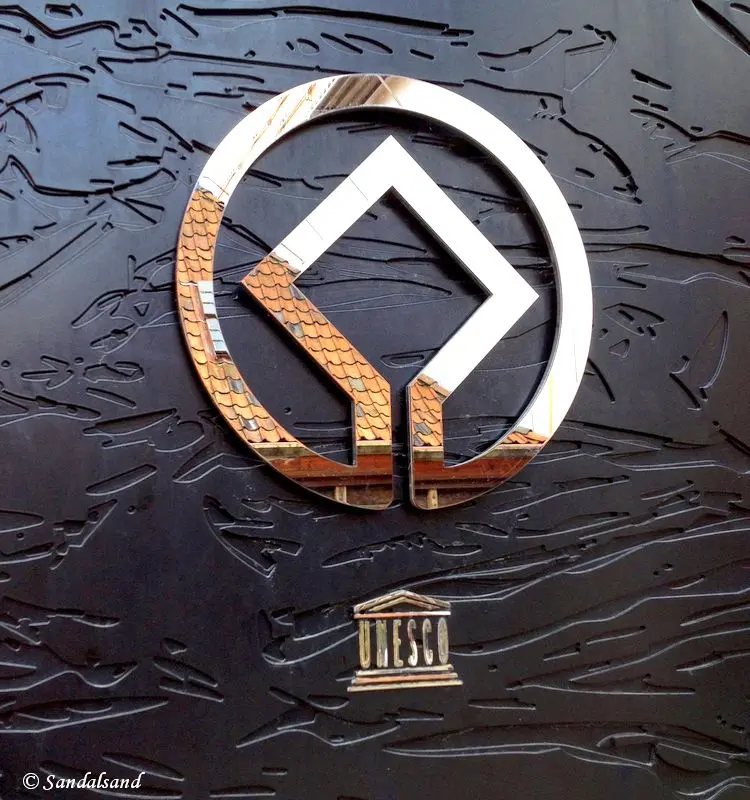
UNESCO’s sign is found on many World Heritage Sites. The one pictured here is from Bryggen, in Bergen, Norway.
Some sites have been removed from the list. There have also been controversies between the WHC and a country relating to the future development of the site (like a particular bridge in Germany). Other removals have been obvious because the criteria are no longer met (such as the extinction of a particular bird in Oman).
With these cases in mind, one should note that the WHC operates a list of 56 properties in danger (2024).
Relative distribution of sites
When we look at the full site map, we immediately notice the prevalence of sites in Europe and North America (in reality Europe mostly). Nonetheless, almost the entire world is covered. That is actually no little achievement for the world community.
The following illustrations follow the WHC categorisation of world regions and show the relative distribution of sites.
%
Arab States
%
Africa
%
Latin America and the Caribbean
%
Asia and the Pacific
%
Europe and North America
Sites on a map
Drag and zoom on the map below to find sites visited by Sandalsand in more detail. Click on a marker to reveal the name and open the article about it. You will find the same links further down this page. Find all WHC sites on another Sandalsand map.
I have had my doubts what to do with Liverpool. It was once a World Heritage Site, but was delisted by UNESCO following a controversy with the city authorities. It is my hope it will be re-enlisted some time in the near future, so I have kept the article. However, I removed it from this map as well as from the table below.
Sites in a table
Here are the same sites in a table but with less information compared to the map markers above. Show more rows at a time, sort the table as you like, or search for a specific term. Click on a link to open that particular post.
Sites in 67 countries
It could be that “heritage tourism” is spreading along with the eco-tourism trend. Sandalsand has only in later years become conscious of it.
It was never my idea to become a collector of heritage sites, but I have nonetheless been to a large number. In recent years I have become more intent to visit a “world heritage” when I travel. I suppose that may be one of the purposes of such an official list in the first place.
In any case, I am not satisfied that I visited the pleasant town of Weimar in Germany without exploring the examples of Bauhaus architecture. Likewise, I went to the town of Pécs in Hungary without a look at the Early Christian Necropolis. (To my possible excuse: Neither of them was on the List at the time of my visit.)
Sandalsand’s list is a representative summary of UNESCO’s. It covers the world, and the majority are in Europe. Also, it features sites in both (all) categories: 192 cultural, 13 natural, and 5 combined sites.
Read about each site in separate articles. They include:
- The official and my personal descriptions of the site
- A link to the official UNESCO web page
- My photographs or video
- A link to the article(s) describing the context of my visit(s)
The articles offer short introductions to fabulous destinations around the world. Enjoy!
Here they are, the World Heritage Sites visited by Sandalsand. In my view, they are all lovely destinations.
World Heritage #0990 – Assisi
The magnificent basilica dominating the north-west part of the hillside town of Assisi is accompanied by four less important religious sites close...
World Heritage #1298 – Stoclet House
In 1911 a luxurious home to a wealthy banker and art collector, the Stoclet House, was finished. It spared no costs in its richly decorated exterior...
World Heritage #1005 – Horta’s town houses
It is such a pity with heritage sites that you can't actually visit and discover the true reason why they are on the list. Horta's four town houses...
World Heritage #0855 – Flemish Béguinages
Learn about the Flemish Béguinages. The white-coloured houses around a tranquil convent garden with high trees in the middle sends you mentally...
World Heritage #0943 – Belfries of Belgium and France
This serial heritage site, Belfries of Belgium and France, consists of 33 belfries scattered across both regions of Belgium and 23 in Northern...
World Heritage #0996 – Brugge
The historic centre of Brugge (or Bruges in English and French) is charming and picture postcard perfect. There is so much to see, discover, learn...
World Heritage #0251 – Agra Fort
Judging by the entrance visitors usually are led through, the monumental Amar Singh Gate, the Agra Fort is undoubtedly a fortress. It even has a...
World Heritage #0252 – Taj Mahal
Built as a monument to the undying love and affection the emperor Shah Jahan had for his second wife, the Taj Mahal is one of the world's most...
World Heritage #0255 – Fatehpur Sikri
Imagine what the Mughal emperors of India did at Fatehpur Sikri. They spent 15 years planning and building a brand new capital, only to abandon it...
World Heritage #1605 – Jaipur City, Rajasthan
Jaipur City is unlike other medieval cities of the region. It was deliberately planned as a new city on the plains. Jaipur was meant to be open for...
World Heritage #1338 – The Jantar Mantar
The astronomical instruments at Jantar Mantar are impressive due to their 300 years of age. They are also very accurate in showing time and the...
World Heritage #0247 – Hill Forts of Rajasthan
The hill forts of Rajasthan are preserved manifestations of the immense powers held by the maharajahs of the Rajput kingdoms from the 8th to the...
World Heritage #0233 – Qutb Minar
The tallest brick minaret in the world, the Qutb Minar, was built as a victory tower after 1192. It was developed during the next centuries until it...
World Heritage #0232 – Humayun’s Tomb, Delhi
There are several important structures within this large complex in Delhi, but none as impressive as Humayun's Tomb. He was the second emperor of...
World Heritage #0847 – Malbork
It took an extreme amount of red bricks to create the massive complex at Malbork. It is the world's largest castle of its kind. The UNESCO World...
World Heritage #0559 – Drottningholm
What makes Drottningholm so outstanding is how the different influences from the wider world have set their mark on the park and buildings in it....
World Heritage #1221 – Rideau Canal
The primary purpose of the Rideau Canal was to to keep the United States out of Canada. It was kind of a success. The UNESCO World Heritage List...
World Heritage #0300 – Old Québec
Old Québec City is so French, in architecture, language and traditions that you feel you have arrived in Europe. The UNESCO World Heritage List...
World Heritage #1152 – Thingvellir National Park
The sacred area of Thingvellir has more than a symbolic meaning for the Icelanders. It is also a place where you can stand with one foot on one...
World Heritage #0121 – Kathmandu Valley
The magnificent religious monuments in the Kathmandu Valley have withstood centuries of storms, wars and earthquakes. The UNESCO World...
World Heritage #0284 – Chitwan National Park
Nepal is so varied. From the highest and most barren mountains in the world, to the low-lying, wet and humid jungles - like the Chitwan National...
World Heritage #0576 – Ayutthaya
The Kingdom of Siam had its capital in Ayutthaya from 1351 to 1767 and developed a wealthy city full of palaces and temples. Today it is the ruins...
World Heritage #1486 – Rjukan-Notodden
Yes, Rjukan-Notodden is an Industrial Heritage Site but it is also the site of one of the most spectacular commando operations during World War II....
World Heritage #1018 – Ephesus
In Ephesus we may visit one of the most distinguished buildings still standing from the Hellenistic-Roman period in Turkey. The UNESCO World...
It is not down in any map; true places never are. (Herman Melville)

